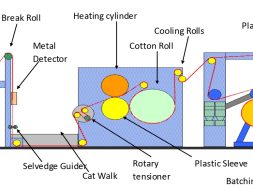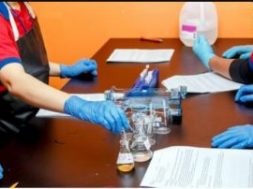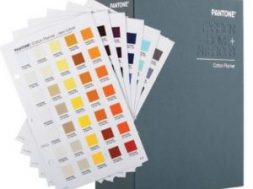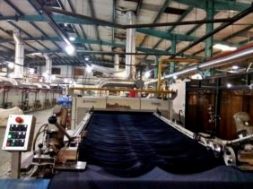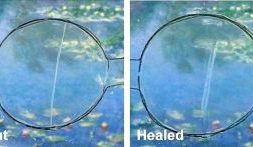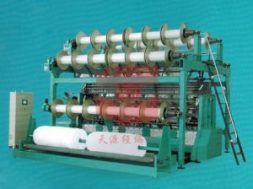The Dyeing Process of Disperse Dyes
The Dyeing Process of Disperse Dyes
The dyeing of hydrophobic fibres like polyester fibres with disperse dyes may be considered as a process of dye transfer from liquid solvent (water) to a solid organic solvent (fibre).Disperse dyes are added to water with a surface active agent to form an aqueous dispersion. The insolubility of disperse dyes enables them to leave the dye liquor as they are more substantive to the organic fibre than to the inorganic dye liquor. The application of heat to the dye liquor increases the energy of dye molecules and accelerates the dyeing of textile fibres.

Heating of dye liquor swells the fibre to some extent and assists the dye to penetrate the fibre polymer system. Thus the dye molecule takes its place in the amorphous regions of the fibre. Once taking place within the fibre polymer system, the dye molecules are held by hydrogen bonds and Van Der Waals’ force.
The dyeing is considered to take place in the following simultaneous steps:
Diffusion of dye in solid phase into water by breaking up into individual molecules. This diffusion depends on dispersibility and solubility of dyestuff and is aided by the presence of dispersing agents and increasing temperature.
Adsorption of the dissolved dye from the solution onto the fibre surface. This dyestuff adsorption by fibre surface is influenced by the solubility of the dye in the dye bath and that in the fibre.
Diffusion of the adsorbed dye from the fibre surface into the interior of the fibre substance towards the centre. In normal condition, the adsorption rate is always higher than the diffusion rate. And this is the governing step of dyeing.
When equilibrium dyeing is reached, the following equilibria are also established:
- Dye dispersed in the bath
- Dye dissolved in the bath
- Dye dissolved in the bath
- Dye adsorbed on the fibre
- Dye adsorbed on the fibre
- Dye diffused in the fibre
Dyeing of Acrylic Fibres :
Principle
All fibres dyed the same colour: dye with a combination of direct-dyeing union dyes and acetate dyes. Dyeing of acrylic fibres These fibres can exhibit very different dye affinities. Acrylic staple fibres are more easily dyed and in greater depths than filaments. The dyeing of acrylic fibres has proved difficult to the extent that whilst polyacrylonitrile fibres only begin to exhibit adequate affinity at relatively high temperatures of 70–85°C (depending on origin), the rate of dyeing is virtually doubled with an increase in temperature of around 3–4°C. Moreover, only a very low degree of migration takes place at the usual dyeing temperatures, i.e. as a rule, uneven dyeings cannot be levelled out adequately.
Dyes Used
- Cationic dyes: suitable for pale to dark shades; pale to medium depth shades are usually dyed using cationic or anionic retarders at the boil. The HT process is only suitable for acrylic filaments and fibres of low affinity. Continuous methods are used for loose stock, tow and combed sliver as well as, to some extent, acrylic/cellulose blends (fixation medium = saturated steam). The thermosol process is of practically no significance (levelling problems, unsatisfactory reproducibility and effect on handle).
- Disperse dyes: the material is introduced into the dye bath at 70°C, brought to the boil quickly and dyed at the boil for 1 h. The thermosol and pad-steam processes are of secondary importance. Dyeing of acrylic/wool blends Dyeing methods single-bath single-stage, single-bath two-stage or a two-bath process. Cationic dyes are used to dye the acrylic component and acid, 1 : 2 metal-complex and reactive dyes are used to dye the wool component.
When dyeing acrylic fibres and wool, the cationic dyes stain the wool component first. As the boil is approached during dyeing, they transfer slowly from the wool on to the acrylic fibre and if the proportion of wool is at least 30%, retarders are not necessary. The transfer of cationic dyes from the wool is dependent on the quantity of dye, dyeing time, dyeing temperature and the pH. In the case of deep shades, a dyeing time of 45–60 min. at the boil is necessary to achieve a good wool reserve. With falling pH, the wool reserve increases. A good wool reserve is a prerequisite for the achievement of optimum wet and light fastness properties.
(93)

